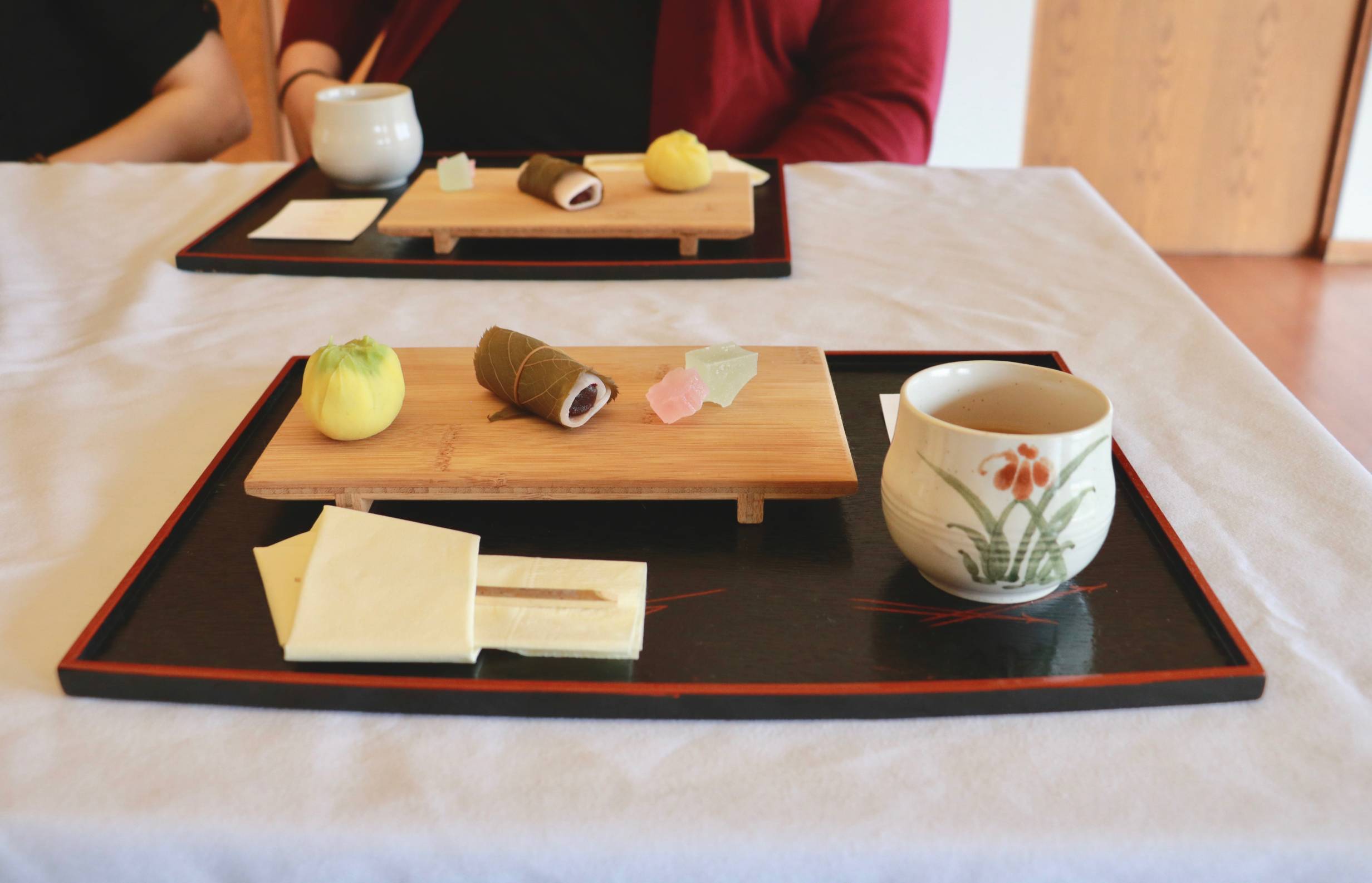Last Sunday morning, 24 lucky people attended the wagashi tasting event at Japan House, in the occasion of showcasing the newly published book, The Art of Wagashi: Recipes for Japanese Sweets that Delight the Palate and the Eyes, written by UIUC Professor Emeritus Kimiko Gunji, who is also the previous director of Japan House.
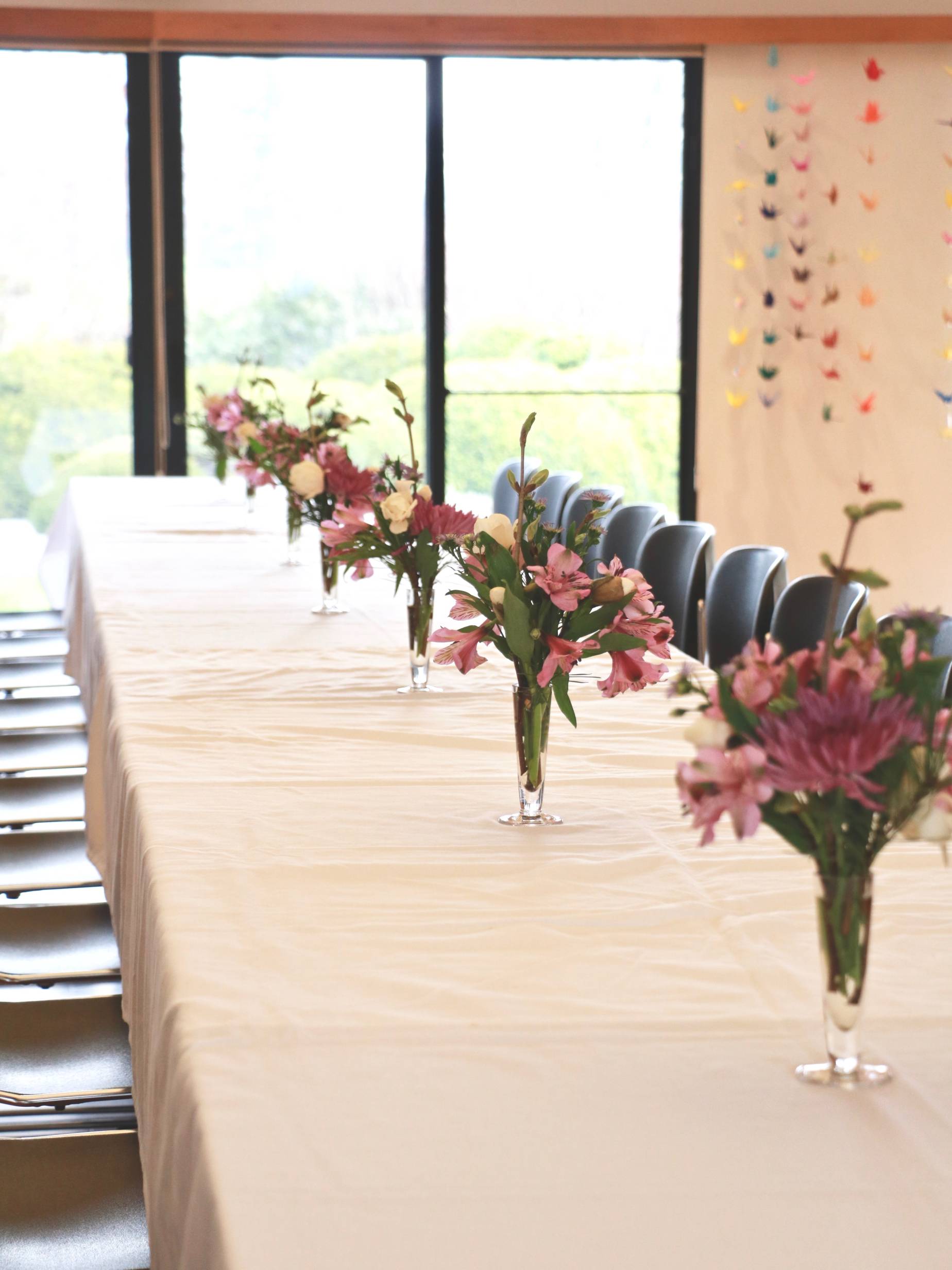
Wagashi (和菓子) are Japanese sweets that are typically enjoyed before tea, and as our presenter and author Kimiko Gunji had explained, the primary sweetener in wagashi before sugar came to Japan was fruits, therefore in the Japanese writing of wagashi, it read “fruits” in its earliest form. Today even with the use of refined sugar, that early connection with nature and seasonality is still the central philosophy of each unique wagashi, through flavors and styling.
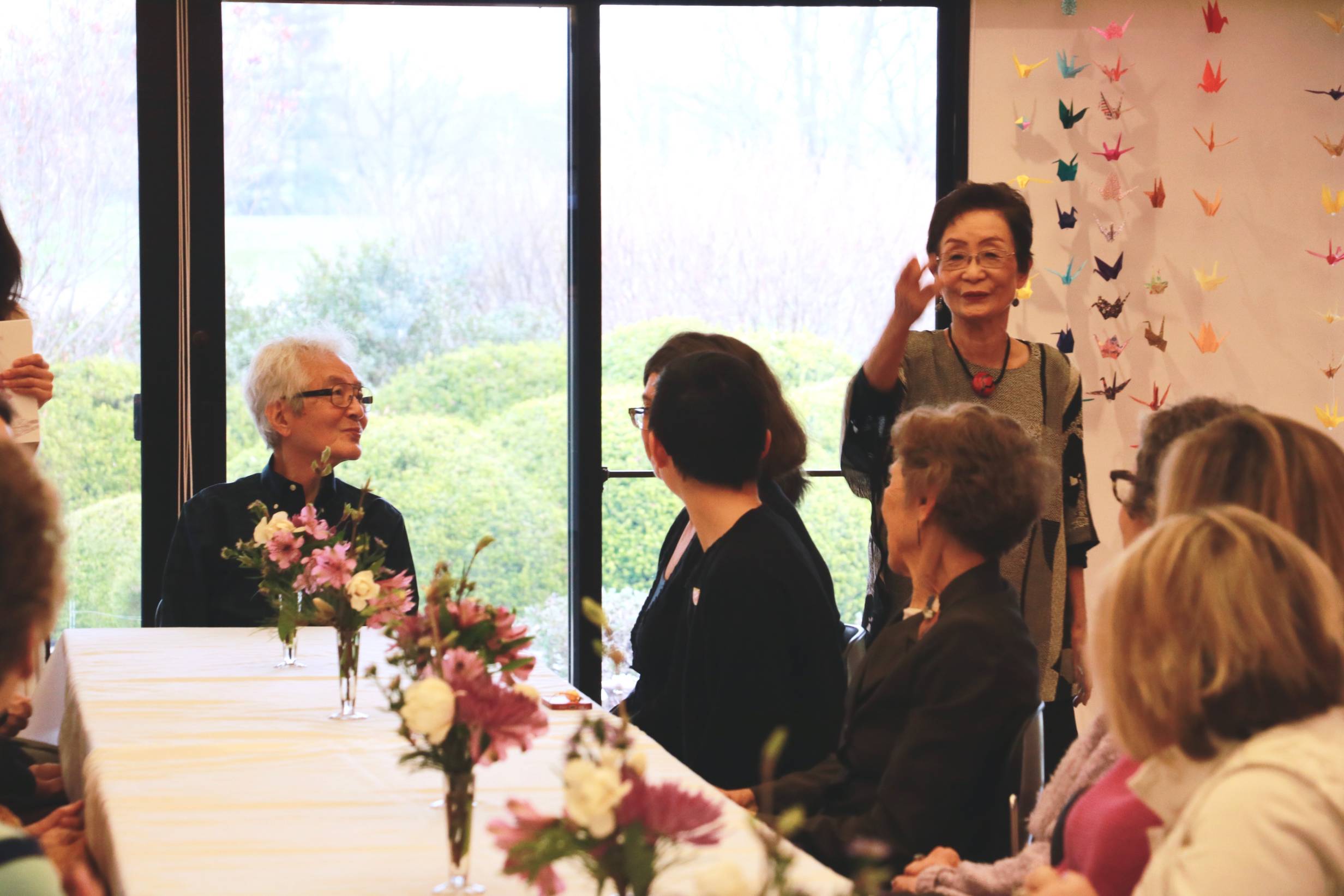
Changing into slippers, we entered into a Japan House that was as freshened as the morning, bundles of flowers lining a long table in the center of the room. As all guests were seated, first began the presentation. Professor Emeritus Gunji and Japan House Director Jennifer Gunji-Ballsrud took turns to introduce the 5 years of work that went into the making of the book, the philosophy and essential components of wagashi, and very quickly we were served our sweets and first tea of the day.

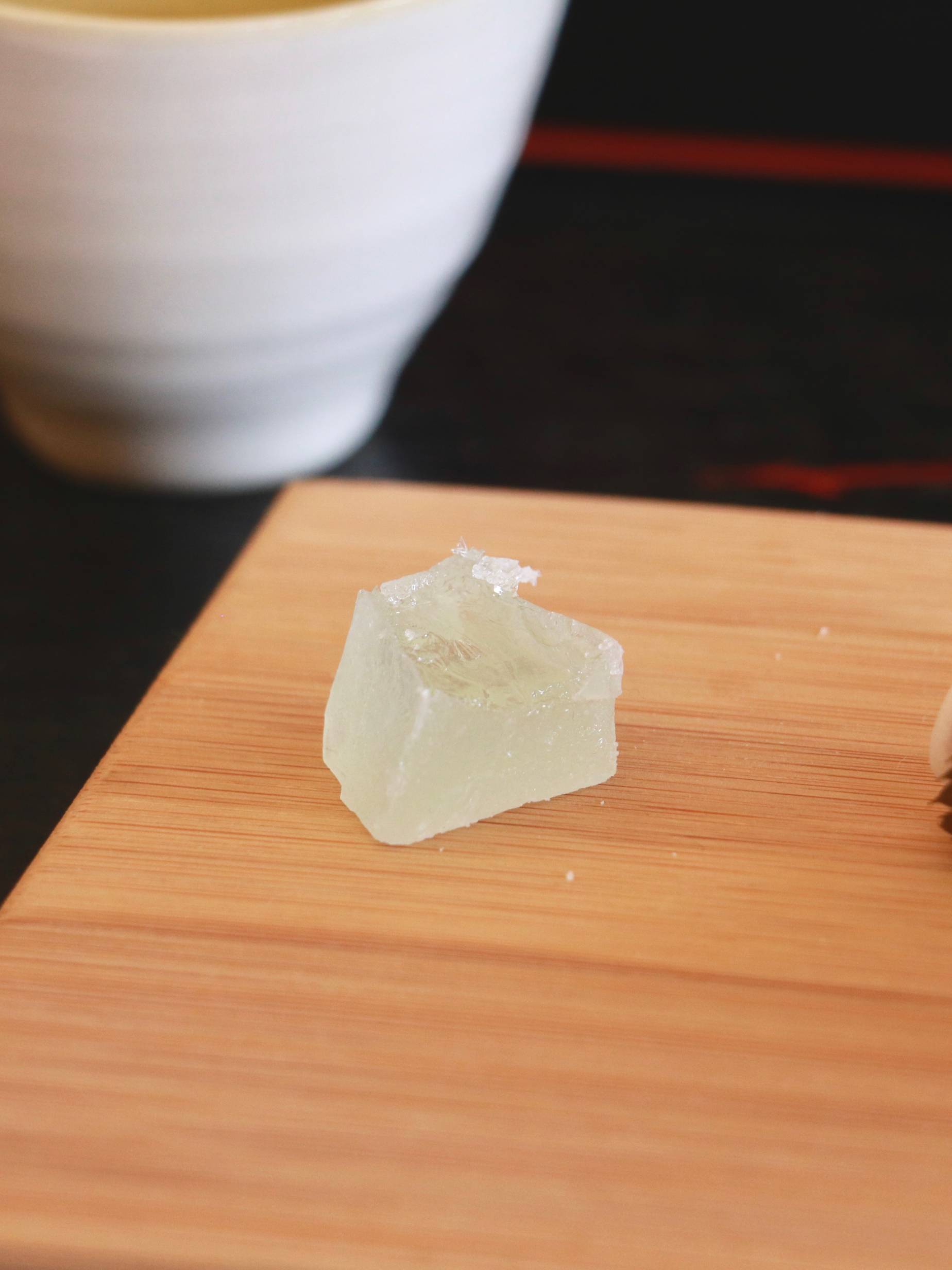
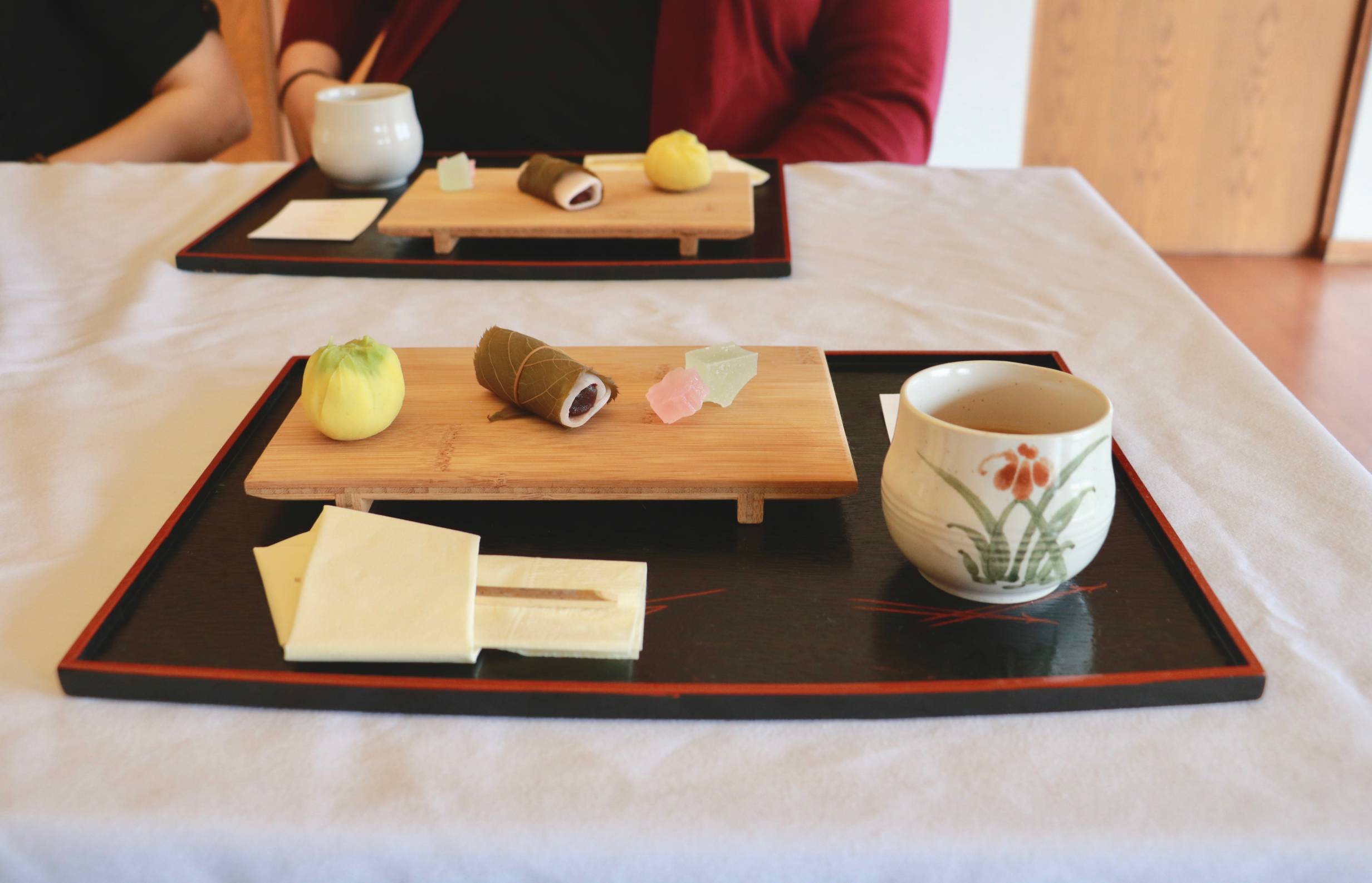
Three different types of wagashi were paired with three distinctively different teas at this event, starting on the right. The kohakutou were made of solely water, sugar, agar-agar (a gel substance derived from seaweeds), and food coloring, yet had a crunchy-sugary crust and a tender interior that was as clear as glass. Professor Emeritus Gunji explained that in order to achieve that dual-texture, the mixture had to be cooked very carefully and not overdone. After cooling and forming the pieces, they must be air-dried for a few days while turning in between, for the sugary crust to develop. The light sweet was paired with a tart-smelling cherry blossom tea created by the Republic of Tea for Japan House’s 20th Anniversary in 2018, which apart from being delicious, also reminded me that cherry blossom season at Japan House is at the doorstep.
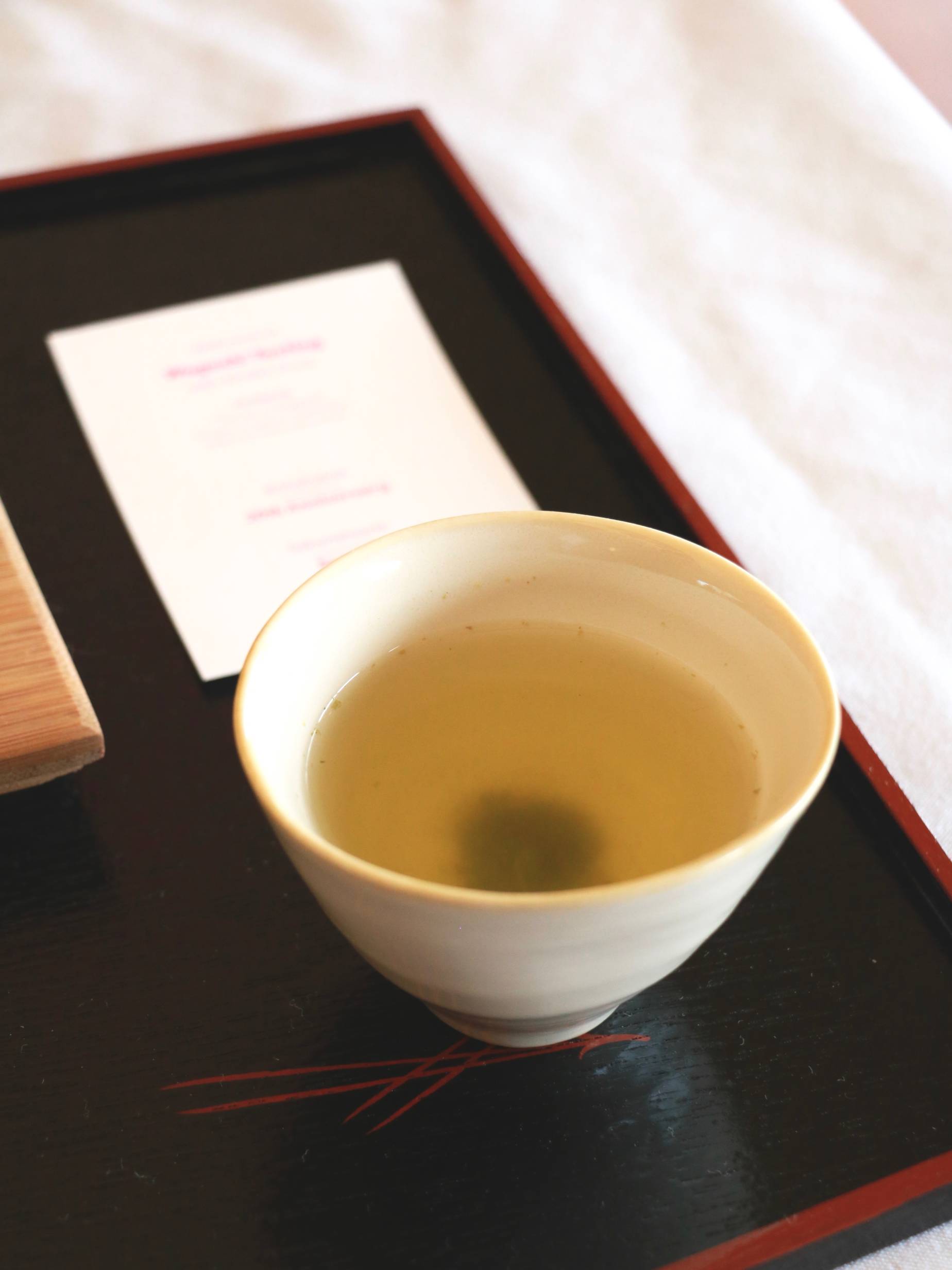
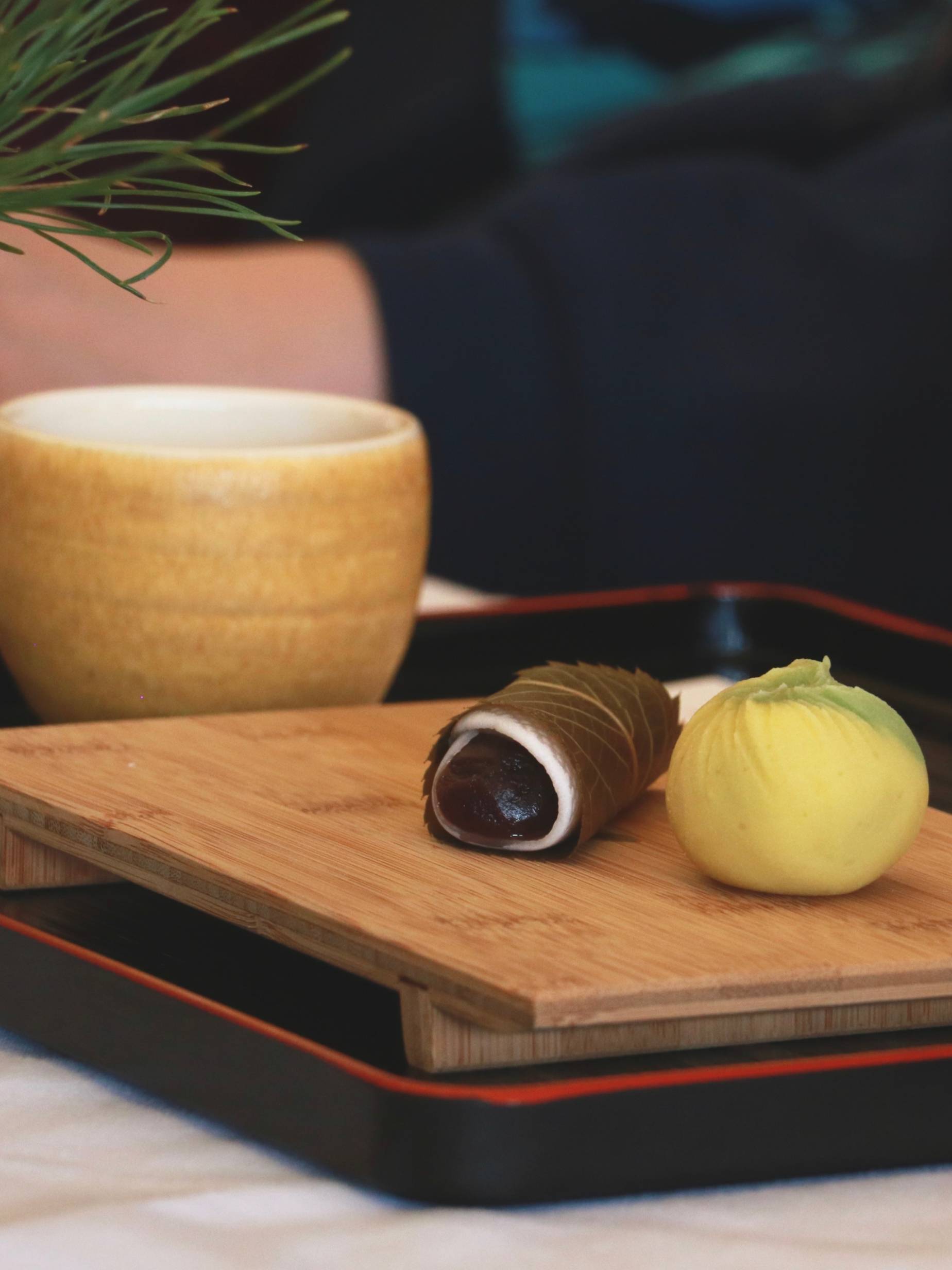
The second tea was a sencha, a brewed green tea that was altogether fresh, nutty, grassy, and umami/savory. Paired with the sakuramochi, a wagashi of pink rice crepe that wears a piece of preserved cherry leaf, with anko (sweet red bean paste) enrobed inside. For some, that first bite into this wagashi was a true leap of faith — there’s the sweet bean, then a chewy layer made of sweet rice and wheat flour (the mochi), on top of everything an edible tree leaf that was only slightly salty — the combination of unfamiliar flavors and textures could be a source for confusion. But for sweet bean and mochi veterans such as myself, that combination was such a nostalgic treat.
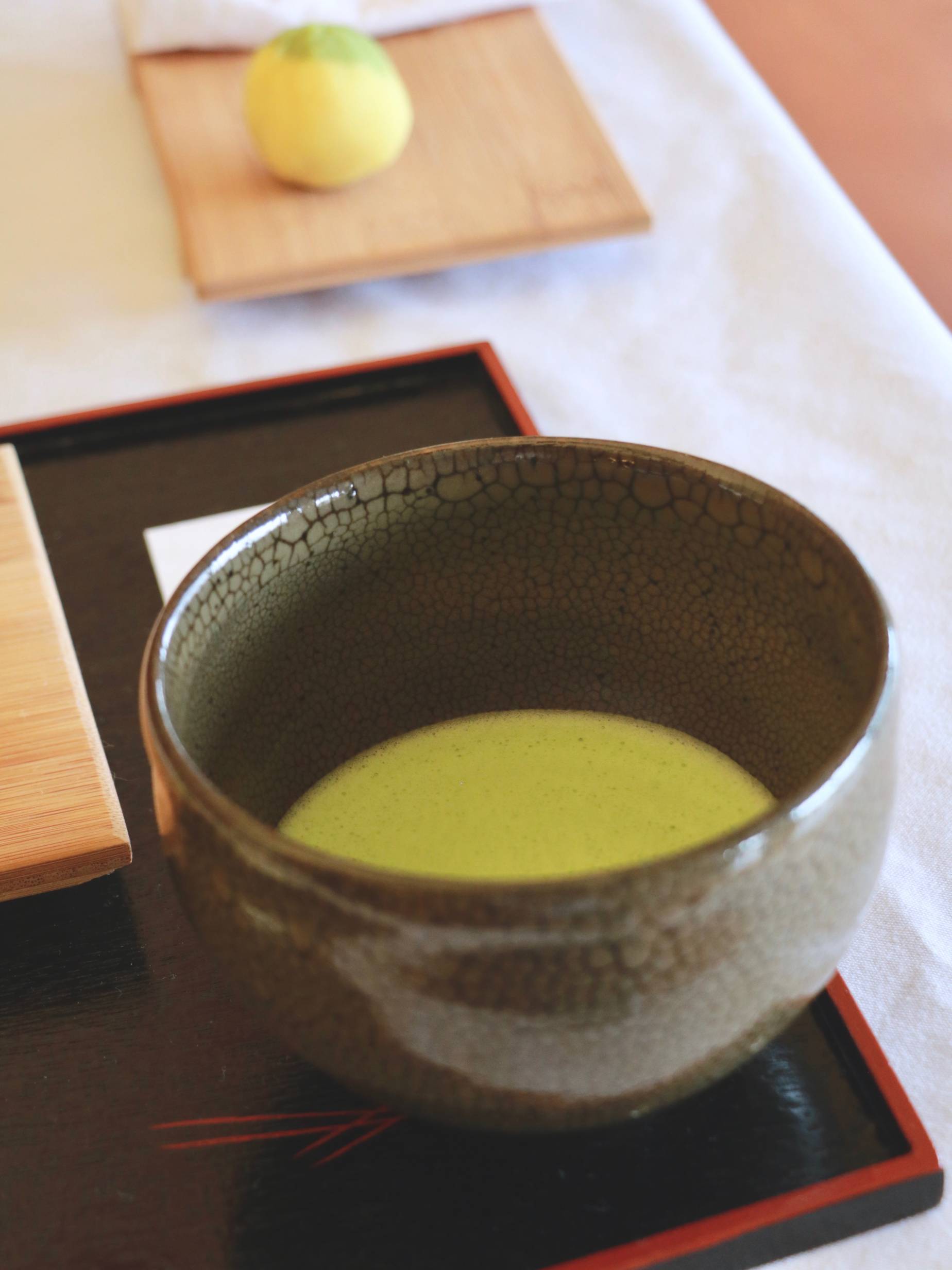
The third and final wagashi was served with matcha. Many at the table were already familiar with matcha; the finely powdered green tea was grown shaded for part of its life to amp up the chlorophyll production, along with other phytochemicals. When whisked properly with a little hot water, matcha has a beautifully creamy spring-green foam layer on top, hiding a full-bodied short drink underneath. The amount of culture and learning behind serving matcha is immense, for anyone who’s unfamiliar, Japan House offers weekly tea ceremonies that everyone can attend.
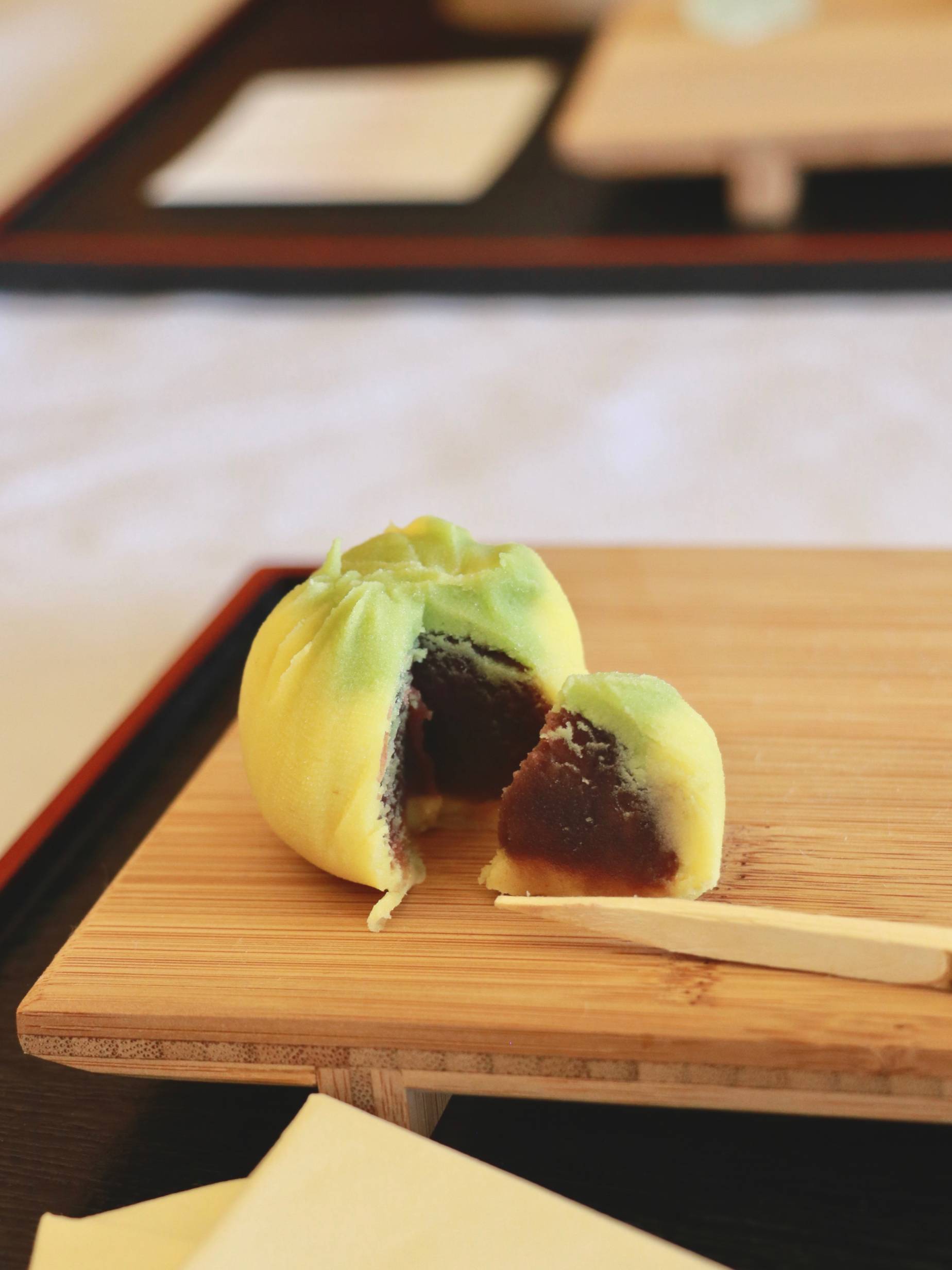
The wagashi we enjoyed with this relatively labor-intensive tea almost looked too simple, and yet it must have been the most fitting. The nerikiri was a yellow-green sphere with a piece of sweet red bean paste inside, Professor Emeritus Gunji also showed us how the sweet was simply shaped with a piece of cotton cloth. The part that we don’t see, was all the work that would go into making the sweet lima bean paste that was the outer layer — the beans were peeled and cooked and washed and washed until no bean-y flavor was left of them, passed through a fine sieve to achieve such ridiculously smooth texture, then cooked to reach the desired consistency. The end result was sweet and lightly nutty, a joy to cut into with the little wooden pick, the perfect accompaniment to the matcha that we enjoyed between generous sips.
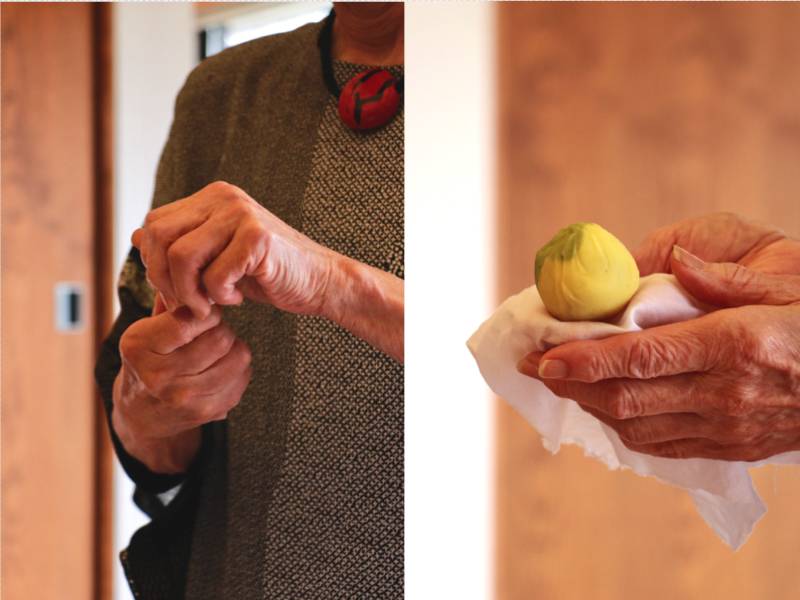
Time passed effortlessly with the steady stream of teas and sweets, as well as the stream of volunteers and interns who flowed by in service. It seemed so natural for this kind of events to happen in this building, so natural to experience this careful execution of Japanese teas and wagashi in a peaceful morning; but I had to remind myself that we were in Central Illinois, the land of corn and soy, brownies and buttercakes, so that the naturalness alone was already something quite profound, before everything else.
For those interested in the art of wagashi like the ones we tasted, the new cook book authored by Kimiko Gunji is designed for the American kitchen, and it can be purchased at Japan House. Stay tuned to their events and maybe go to one of the weekly tea ceremonies, through their website.
Japan House
2000 S Lincoln Ave
Urbana
Photos by Cara Feng








